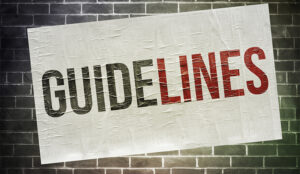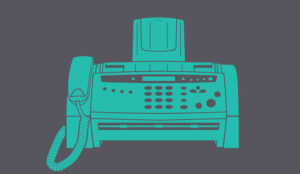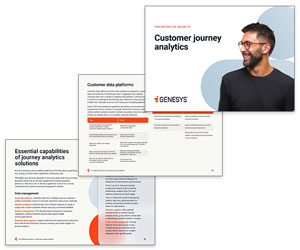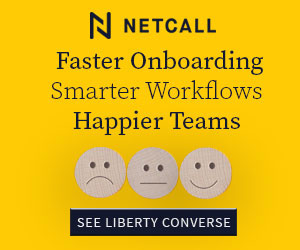Our panel highlight the mistakes you should be avoiding when running an outbound dialling campaign.
Mistake #1: Letting your call data go out of date
If you have a large database of numbers to call, your whole operation will run more efficiently if you can cleanse it of dead, unused or out-of-date telephone numbers.
Even if you’ve collected your data yourself, it can become out of date very quickly. Ensure you have the right procedures in place to keep your data useful and filled with potential.
Mistake #2: Presenting an ’08’ number to your customers
All mobile devices – and most landline phones – will display your outbound number when a call is made.
If you’re presenting an 0845 or 0800 number to your recipients they’ll be much more likely to ignore the call.
Various providers offer the ability to control the CLI that is presented to the called party, changing their perception of the call and increasing contact rates.
Mistake #3: Choosing the cheapest call rates
In some situations, sourcing the cheapest call routes can only have a positive effect on business. However, with outbound campaigns, it is essential that you consider the quality of the network that terminates your calls.
Outbound calls are often high in volume and short in duration, creating a motorway of call traffic for your network provider.
Make sure your provider has the right architecture and systems in place to handle your dialler’s call attempts. This will avoid unconnected calls and maximise agent talk time.
With thanks to Martyn King at Nexbridge
Mistake #4: Running an outbound dialling campaign in isolation
One of the biggest mistakes with outbound dialling is running the campaign in complete isolation from all other contact strategies and channels within the contact centre.
Outbound should be integrated into a contact strategy so that it supplements other contact methods within your business. It should be built in to a contact strategy to your customer base – and not just be a “bolt-on”.
Mistake #5: Running a campaign with just names and telephone numbers
Many companies have lots of data about their customers, especially when making collection and up-sell calls.
Yet the teams providing data to the dialler seem to think that just providing a name and contact number is all that is required for effective outbound contact – it is not.
Good quality and insightful data is key to ensuring your outbound contact is as effective (not efficient) as it can be. Outbound contact is about timeliness of contact and delivering a relevant offering to that contact.

Dave Vernon
If we have more data that tells us such things as gender, location, profession, and social information, we can use this information to ensure that we make appropriate contact.
An example of this could be using certain coastal postcodes for daytime dialling, where it is known that these areas have a large concentration of retired people who are generally available in the day when compared to people who are employed.
Another example would be trying to contact employed people around lunchtime to try and speak to them while on their lunch break.
These are very simple examples, but the more data you have, the more creative and “tactical” you can be with your attempts to contact your dialling list.
With thanks to Dave Vernon at The Forum
Mistake #6: Randomly dialling out and wasting everyone’s time
Many contact centres just switch the dialler on and leave it, without assessing the business aim. The result is endless redials to the same person, with the associated risks, wasted time and effort.
Consider the profile of the person you want to reach and then use precision dialling to drive the dialler and optimise the chance of making successful contact with your customers.

Ken Reid
Mistake #7: Focusing on a single channel experience
Diallers in contact centres used to be about mass contact – for example, using a predictive dialler to support debt collection – but many businesses now have customers who use multichannel contact.
Precision dialling technology can enable requests for contact such as emails, tweets and chats to be fed into the dialler to deliver a fast, personal response.
With thanks to Ken Reid at Rostrvm Solutions
Mistake #8: Risking reputation by contacting customers registered on the TPS

Justin Hamilton-Martin
When customers make the effort of registering themselves with the TPS and expressing that they don’t want to be contacted by contact centres, organisations should respect their wishes.
Apart from not wasting customers’ time or exposing agents to negative reactions, it makes sense to avoid anything that might cause reputational damage.
While it is possible to remove any customer records from outbound dialling data before embarking on a new campaign, an easier way to do this is through cloud-based outbound dialling services, which automatically ensure that no one is contacted who shouldn’t be.
With thanks to Justin Hamilton-Martin at Ultra Communications
Mistake #9: Making life difficult for customers who call back
You need to make the most of customers who may have missed a call from your contact centre and who call back.
These customers are far more likely to convert and have a successful call outcome, plus they are far more likely to be receptive to talking as they have called in at a time that is convenient to them.
Make it easy for the customer to call back by ensure they are not having to call a premium rate number to contact you.
Also consider creating individual CLIs (caller line IDs) for your agents to ensure that they get their own individual call-backs.

David Ford
Mistake #10: Dialling unavailable mobile phones
If you are calling out to high volumes of mobile numbers, be aware that typically 1 in 3 mobiles is either off, roaming or unavailable.
Using mobile number screening to intelligently check the network and establish the status of mobiles before attempting to dial can save a lot of time and increase connect rates to mobiles by up to 40%.
Rather than attempting to dial those numbers that are turned off, unavailable or roaming, queue them for calling later on once they do become available.
Mistake #11: Focusing on short-term goals rather than the bigger picture
Encourage attention to detail. Ensure that agents are capturing and recording relevant and accurate information whilst on their calls.
Requesting and recording a second telephone number or an email address might give you a short-term increase in average handling time (AHT), but your data quality is improved for future campaigns.
With thanks to David Ford at Magnetic North
Mistake #12: Ignoring your inbound channel
Don’t ignore your inbound channel! Making outbound calls often generates inbound traffic, even from a failed contact attempt.
Ensure you can first measure this effect and then handle the traffic that occurs.
Mistake #13: Diving in without thorough testing
Don’t dive in without testing!
If you make a change to the system, ensure you thoroughly test to ensure it has not had an undesired effect.
Mistake #14: Ignoring compliance
Don’t ignore compliance.
Always ensure you are dialling compliantly and check all your campaigns by your internal risk departments.
Mistake #15: Assuming more calls = more contacts
Don’t take an outbound contact approach that simply makes more calls to achieve more contacts.
This results in an increased risk of customer annoyance and an increased cost to contact.
With thanks to Sian Ciabattoni at Noble Systems
Mistake #16: Targeting customers with products that aren’t relevant to them
One of the most important things to ensure is that outbound calls are consistently targeted and relevant to the customer.
Making sure that customers are correctly categorised via profiling tools will ensure that they are not targeted for a product or service that is not applicable to their demographic.
Mistake #17: Over-scripting your agents so they sound too robotic
Another aspect of outbound dialling that can irritate customers is agent scripting.
While it’s important to provide agents with a thorough script to brief them on different scenarios and ensure that the correct outcome is achieved, it’s vital to train agents in their delivery.
Otherwise, customers will be frustrated by the stilted, robotic nature of delivery and are less likely to engage with or react positively to the call.

Keith Wilkinson
Mistake #18: Greeting potential customers with silence
Predictive outbound calls – where an agent is predicted to be available when the dialler places the call, rather than being ready and waiting – can sometimes lead to more calls being placed than agents available to take the calls.
If the call is successful and reaches the customer, it is vital that there is an agent ready and waiting to engage the customer, so that they are not greeted with silence.
Mistake #19: Contacting customers who’ve asked to be removed from your list
When a customer requests to be removed from a list and not to be contacted again, it is important that this is duly marked on the system.
Calls to customers that have specifically requested not to receive them will cause annoyance and result in negative engagement.
With thanks to Keith Wilkinson at Genesys
Mistake #20: Beginning your calls with an automated message
Automated messages should never be used when trying to reach a customer or prospect, even if the call is then passed through to an agent.
The prospect is very unlikely to welcome the pre-recorded message and will probably not stay on the line.
Buyers need to be spoken to directly so that they know exactly who they’re talking to and what company the caller is from.
With thanks to Jonathan Gale at NewVoiceMedia
Mistake #21: Wasting time with a dialler that doesn’t self-regulate
Invest in a dialler that is able to self-regulate and manage itself to avoid breaching compliance.
Otherwise your Dialler Manager will have their hands full just managing compliance – and won’t be able to focus on the other areas where they could be adding value to the contact centre.
Mistake #22: Overlooking the need for outbound multichannel
Many contact centres have yet to include outbound multichannel into their processes.
This means they’re missing out on the operational and cost efficiencies available, while also adding interaction complexity for customers.
The goal is to move to one system to handle multichannel inbound and outbound interactions as part of a coordinated process.
For instance, use an outbound SMS which has direct links to self-service, the web or inbound agents.
Your agents are the most significant expense in the contact centre, but also your greatest asset. Why commit your top outbound agents to chase a debt when a simple outbound SMS the day before a payment is due might prompt an inbound call from your customer?
Other recent developments such as outbound IVR can also streamline customer interactions when used appropriately in areas such as collections.
Mistake #23: Replacing technology before addressing human issues of performance
Dialler technology, if properly used, can considerably improve your agent utilisation and give you very high connect rates, but it’s only part of the story.

Stephen Wright
For instance, if your after-call processes are already broken, increasing the number of connected calls can make things even worse, and increasing the number of agents won’t help either.
A drive to minimise after-call work through streamlined processes and training can yield significant results, whether you’re using a dialler or not.
Similarly, you may have tasked agents to handle multiple campaigns and activities, but if they haven’t received the relevant training then all efficiencies will be lost through increased talk time and poor customer service.
Human issues always need to be considered before technology can make a real difference.
Mistake #24: Disrupting the planned calling schedule with automated call-backs
Most diallers will allow agents to create automated call-backs. These can be a great way of getting in touch with busy or elusive consumers.
However, this can also be inefficient and frequently affects dialling performance when the call-backs occur, as it disrupts the planned calling schedule.
Agents will also often schedule call-backs for when they are not around, leading to increases in the number of abandoned calls.
Use the dialler manager to set policies to either limit the number of call-backs or ensure your agents are adhering to them.
Mistake #25: Relying on answer machine detection (AMD) technology
One of the main issues affecting outbound agent productivity is the number of answerphones encountered.
To combat this, many contact centres use answer-machine detection (AMD) technology, which uses various techniques to automatically detect if a call has been answered by a person or some form of answering machine.
But AMD technology is not 100% reliable and can fail by generating either a ‘false positive’, where the AMD technology judges a live caller to be an answering machine, or a ‘false negative’, where it incorrectly believes an answering machine is a real person and connects the call to an agent.
While ‘false negatives’ result in a reduction in agent productivity, ‘false positives’ will cause silent calls that can negatively impact your brand and cause a nuisance to consumers, leading to complaints and ultimately investigations.
The quickest and best solution to avoid potential breaches is to simply turn off AMD. Failing that, you must ensure you remain in line with Ofcom regulations around silent calls.
With thanks to Stephen Wright at Azzurri
Mistake #26: Calling when your customers are having dinner
Poor timing is one of the most common mistakes made by outbound dialling campaigns.
Ring somebody at 10.30 in the morning or in the early afternoon and they are quite likely to be away from the desk or in a meeting. Even worse, call them at 7 p.m. when they just about to start their evening meal, and you are likely to annoy and aggravate them.
If you call them instead in the early morning, at the top of the hour, at lunch, or in the late afternoon, they are much more likely to be at their desks and ready and willing to engage with you.

Jeremy Payne
Mistake #27: Missing valuable opportunities to train your staff
The use of speech analytics, recording and listening software can play a key role in outbound campaigns, but too few businesses are using the solutions proactively to train up staff.
Recordings can be taken and reused at a later date or in real time on calls to enhance sales techniques or improve call quality.
Being able to listen in to both sides of a conversation, and understand when a client or customer is getting agitated or stressed, can allow you to take proactive action and intervene and calm the situation down where necessary.
With thanks to Jeremy Payne at Enghouse Interactive
What do you think are the worst mistakes you can make with an outbound dialling campaign? Have you made any of these mistakes?
Author: Megan Jones
Published On: 25th Mar 2015 - Last modified: 12th Aug 2025
Read more about - Technology, David Ford, Enghouse Interactive, Genesys, Intrado, Jeremy Payne, Ken Reid, Maintel, Nexbridge, Noble Systems, Outbound, Rob Wilkinson, Rostrvm, The Forum, Ultra, Vonage




















